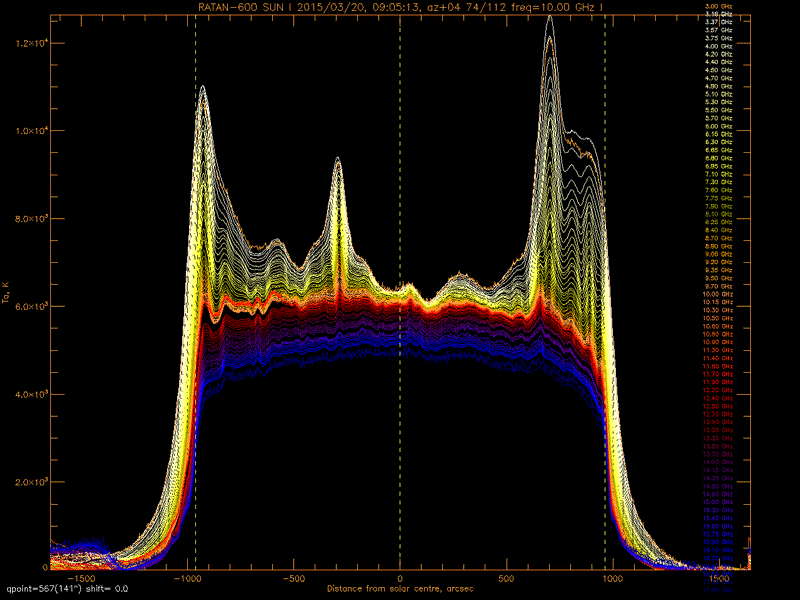|
The March 20 total solar eclipse was visible over the North
Atlantic and Arctic Oceans. The partial phases were observed in
Europe, the western regions of Russia, Central Asia, the Middle
East and partially in the North Africa. In the Special Astrophysical
Observatory it was also partial with the Moon coverage of
the Sun of less than 40%.
Solar eclipses are of interest for radio astronomy, as they make
it possible to observe individual details on the solar disc
(spots, filaments, flocculi, etc.). Since eclipses occur over
different parts of the Earth, the observations are conducted with
radio telescopes of a small size, delivered to the shadow zone.
Eclipse observation with a large radio telescope is a rare
chance. The last solar eclipse was observed at RATAN-600 on
March 29, 2006. Owing to high sensitivity of this radio
telescope, we discovered a bright envelope over the North pole
of the Sun at many wavelengths and investigated its fine structure,
which matched the outgoing magnetic lines.
On March 20, 2015 the integrated observations of the solar eclipse
were carried out at the RATAN-600 radio telescope at 70
wavelengths simultaneously in the range of 1.65cm to 10cm with
the 1% frequency resolution. The observations were conducted in
the multi-azimuthal mode every 8 minutes during 4 hours.
The animation composed of 31 parts shows the Moon covering the
solar corona. Dark blue colors correspond to short waves of about
1.65cm. Lighter colors correspond to longer waves. The right
vertical column of numbers shows the wavelengths used during the
observations. One can see the covering of individual bright sources
associated with the spots: the radiation over them disappears
and then emerges once the Sun's surface is uncovered. The detailed
information on the altitude structure of the solar atmosphere over
individual objects on the Sun will be obtained during further
thorough investigations.
We may state that the unique information obtained with
RATAN-600 will help to gain better understanding of the
processes occurring on the Sun.
Contact - V.M.Bogod

|


